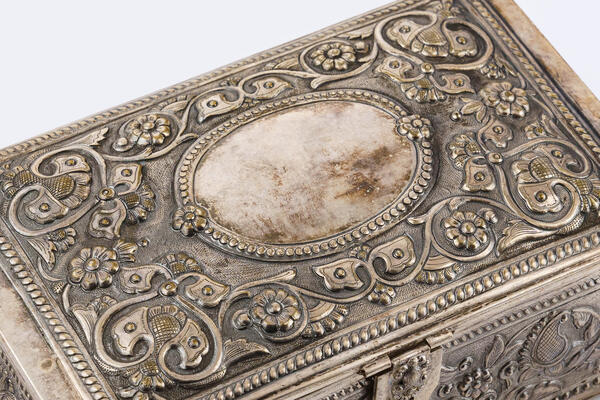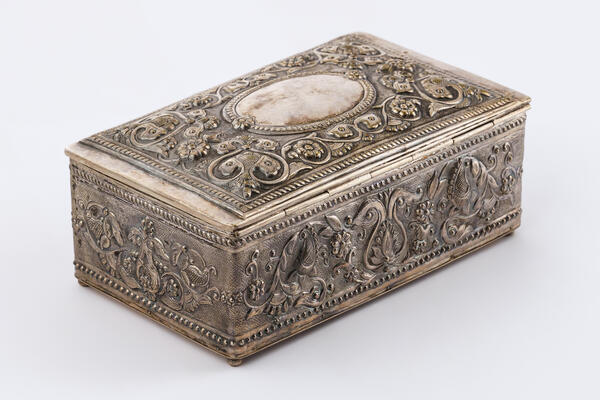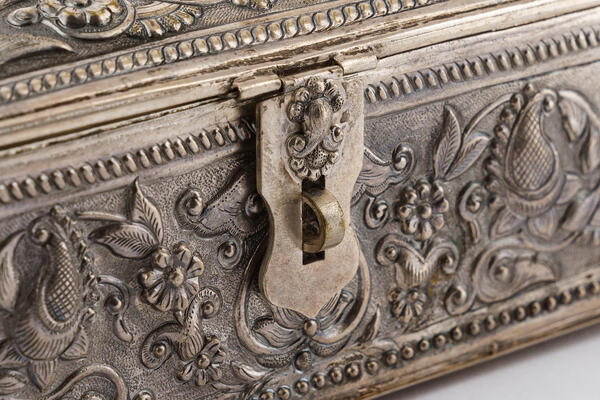In the mid-18th century, the Mstyora region became one of the most famous centers of icon painting. Specialized workshops were established there. Some minted copper and silver icon cases, while in others icons were decorated with paper-thin metal sheets. Icon painting encouraged the development of artistic metalworking.
In 1908, a local resident Vasily Semyonovich Krestyaninov founded the “Industrial Institution of Rolled Copper Foil Production”. He came from a family of peasant entrepreneurs. He owned the largest icon workshop in Mstyora and sold his products in Moscow in the Upper Trading Rows (present-day GUM department store).
The factory manufactured foil for decorating icon covers. During the Soviet era, in the 1930s, it was transformed into the Vyacheslav Molotov Artel. It produced tableware and artistic jewelry products made of non-ferrous metals. The products were decorated in the filigree technique.
Before the beginning of the Great Patriotic War, the artel made stamped spoons, compact cups, and cup holders. In wartime, its focus shifted to special items, for instance, protective wire, rebars for hospitals, and locks for cartridge boxes. In the post-war period, the company returned to the production of souvenirs and jewelry.
The casket “Ornament” was produced at the Vyacheslav Molotov Factory in 1947. The name of the master has not been determined. The silver-plated brass casket is made in the form of a parallelepiped with a slightly convex lid with an oval smooth medallion in the center. The oval is decorated with a frame of small circles. There are two six-petalled flowers on the sides of the oval. The rest of the lid area is filled with a relief ornament of flowers and leaves of different shapes. At the bottom, the casket has ball-shaped legs. Inside it is covered with red velvet. The hatch is made in the shape of a hinged lock.
The side walls are decorated with a slightly
modified ornament consisting of wavy twigs with shoots decorated with leaves
and flowers of various shapes. The ornamental stripe on the walls is
additionally oxidized for decorative purposes. Oxidation (or antiquing) is
often used when working with non-ferrous metals. This technique allows not only
to delicately “age” the item, but also to protect it from further oxidation.





